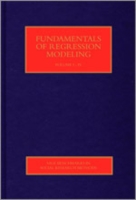Full Description
The Classroom Library: A Catalyst for Literacy Instruction serves two purposes by first providing classroom teachers with a how-to guide in setting up and using the classroom library to support literacy. Next, it provides teachers with excerpts and stories of practicing teachers who have successfully used their classroom library to teach literacy. A wide array of photos, documents, tips, ideas, and descriptions lead teachers to create a classroom library that will scaffold students in the classroom library to establish and extend their literacy development. Several chapters specifically focus on working with under-served students, including students in urban settings, those who are learning English as a second language, and students without access to other libraries. Content in this book is easy to use to help teachers establish a library oasis in their classroom to support learners in preschool through grade eight classrooms. This book is a companion book to More Mirrors in the Classroom:Using Urban Children's Literature to Increase Literacy. Both volumes cover the selection of culturally responsive children's literature.
Contents
Acknowledgments
Introduction
Part I. The Classroom Library by Susan Catapano
Chapter 1. The Role of the Classroom Library
Chapter 2. Building and Managing the Classroom Library: Considering Issues of Equity and Empathy
Chapter 3. Establishing and Organizing the Classroom Library
Chapter 4. Making the Classroom Library the Center of the Language Arts Program
Chapter 5. Advocating for Each Other: Connecting the Classroom Library with the School Librarian
Part II. Voices from the Field: Using the Classroom Library
Chapter 6. From Culturally Colonizing to Culturally Responsive: Using a Classroom Library to Shift the Curriculum
Michelle Falter
Chapter 7. Using the Project Approach as a Vehicle for Culturally Relevant Teaching in the Early Years
Meredith Jones and Jordan Bohannon
Chapter 8. My Teaching Comes from Them: Mediating Guided Reading in a Bilingual Classroom
Kindel Turner Nash, Alicia Arce-Boardman, Christina Luna, Leah Panther, Rhianna Thomas, and Hilary McNeil
Chapter 9. Using Culturally Relevant "Mirror" Books: Teachers Can Benefit, Too!
Laura Szech
Chapter 10. Supporting Students Through Re-Imagined Libraries
Tracy Reynolds
Chapter 11. We Stories: Educators Finding the Language to Talk About Race and Inequity Through Culturally Relevant Texts
Sarah Huismann
References
About the Editors
About the Contributors







